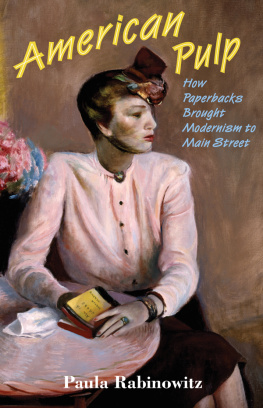Joan Baxter - The mill : fifty years of pulp and protest
Here you can read online Joan Baxter - The mill : fifty years of pulp and protest full text of the book (entire story) in english for free. Download pdf and epub, get meaning, cover and reviews about this ebook. year: 2018, genre: Detective and thriller. Description of the work, (preface) as well as reviews are available. Best literature library LitArk.com created for fans of good reading and offers a wide selection of genres:
Romance novel
Science fiction
Adventure
Detective
Science
History
Home and family
Prose
Art
Politics
Computer
Non-fiction
Religion
Business
Children
Humor
Choose a favorite category and find really read worthwhile books. Enjoy immersion in the world of imagination, feel the emotions of the characters or learn something new for yourself, make an fascinating discovery.
- Book:The mill : fifty years of pulp and protest
- Author:
- Genre:
- Year:2018
- Rating:4 / 5
- Favourites:Add to favourites
- Your mark:
- 80
- 1
- 2
- 3
- 4
- 5
The mill : fifty years of pulp and protest: summary, description and annotation
We offer to read an annotation, description, summary or preface (depends on what the author of the book "The mill : fifty years of pulp and protest" wrote himself). If you haven't found the necessary information about the book — write in the comments, we will try to find it.
The mill : fifty years of pulp and protest — read online for free the complete book (whole text) full work
Below is the text of the book, divided by pages. System saving the place of the last page read, allows you to conveniently read the book "The mill : fifty years of pulp and protest" online for free, without having to search again every time where you left off. Put a bookmark, and you can go to the page where you finished reading at any time.
Font size:
Interval:
Bookmark:
with a foreword by Elizabeth May
Joan Baxter
Pottersfield Press, Lawrencetown Beach, Nova Scotia, Canada
Copyright Joan Baxter 2017
All rights reserved. No part of this publication may be reproduced or used or stored in any form or by any means graphic, electronic or mechanical, including photocopying or by any information storage or retrieval system without the prior written permission of the publisher. Any requests for photocopying, recording, taping or information storage and retrieval systems shall be directed in writing to the publisher or to Access Copyright, The Canadian Copyright Licensing Agency (www.AccessCopyright.ca). This also applies to classroom use.
Library and Archives Canada Cataloguing in Publication
Baxter, Joan, author
The mill: fifty years of pulp and protest / Joan Baxter.
ISBN 978-1-988286-17-4 (softcover)
ISBN EPUB 978-1-988286-25-9
1. Northern Pulp (Pictou, N.S.). 2. Pulp mills--Nova Scotia--Pictou.
3. Pulp mills--Nova Scotia--Pictou--History.
4. Wood-pulp industry--Environmental aspects--Nova Scotia--Pictou.
5. Wood-pulp industry--Social aspects--Nova Scotia--Pictou.
6. Pictou (N.S.)--Social conditions. I. Title.
HD9769.W53N67 2017338.47676120971613C2017-902768-9
Cover image: Dr. Gerry Farrell
Cover design: Gail LeBlanc
Pottersfield Press gratefully acknowledges the financial support of the Government of Canada through the Canada Book Fund for our publishing activities. We also acknowledge the support of the Canada Council for the Arts and the Province of Nova Scotia which has assisted us to develop and promote our creative industries for the benefit of all Nova Scotians.
Pottersfield Press
83 Leslie Road
East Lawrencetown, Nova Scotia, Canada, B2Z 1P8
Website: www.PottersfieldPress.com
To order, phone 1-800-NIMBUS9 (1-800-646-2879) www.nimbus.ns.ca

Pottersfield Press is committed to preserving the environment and the appropriate harvesting of trees and has printed this book on Forest Stewardship Council certified paper.

Dedicated to all those who have struggled so long and so hard to protect our air, water, health, and biodiverse forests in Nova Scotia, and elsewhere on this precious, much-abused planet.
They dont do that no more
by Dave Gunning and Jim Dorie
from Dave Gunnings CD Lift
They walked everywhere they went and sailed on the wind
Wasnt even that long ago some still remember when
You could drink the rivers and eat from every shore
Well the tides come and go they dont do that no more
There were dance halls all around
There was one on Green Hill
Where the good old boys and folks from town
And all the women dressed to kill
Many met their sweethearts wrote letters back and forth
Now thats all been changed they dont do that no more
They dont do that no more they dont do that no more
They dont write letters back and forth
They dont do that no more
Every family had a garden somewhere in the yard
Comforting to know youd always eat if times got hard
And homemade bread was common so was being poor
Now theres credit cards and big-box stores
They dont do that no more
They dont do that no more they dont do that no more
They spend more than they can afford
They dont do that no more
They used to camp there with their kids
Theyd play in the water
The Landing had a fishing fleet she was good as any other
Theyd swim out to Pine Island boil fresh dug clams on shore
Then the big mill started going they dont do that no more
They dont do that no more they dont do that no more
Theres poison on the harbour floor
They dont do that no more
They dont do that no more
They dont do that no more
First, let me declare my bias. Even before I read the volume you hold in your hands, I hated that damn mill.
When my family first visited Nova Scotia, back in the summer of 1972, we stayed at a beautiful spot along the warm waters of the Northumberland Strait in Pictou County. The cottages were lovely, right along the water. I remember my parents marvelling that they were not fully booked. We awoke in the middle of the night to a stench so foul we could not get back to sleep. In the morning my father asked the owner if a sewer line had broken in the night. The poor fellow shook his head sadly. No, he said. Thats the pulp mill. I used to have a good business here, but were on our last legs now. When the wind shifts no one wants to stay and I really cant blame them.
Within a few years of my parents decision to live on Cape Breton Island, from 1975 to 1979, I fought the forest industry in order to protect our community from overhead aerial spraying of toxic insecticides. It was a huge victory when a group of local residents forced the Nova Scotia Cabinet to overturn its initial approval of the spray program.
The purpose of the planned spraying was to eradicate a naturally occurring forest insect the spruce budworm. I started learning from foresters about how forest management practices had changed our forest composition and increased the damage caused by the budworm. Over decades, deliberate decisions had preferenced fir and spruce for pulp over hardwood (deciduous) species for saw logs and building materials. While foresters in the 1950s had called for budworm proofing the forest with mixed species of different ages, the government had gone in the other direction. It was in aid of getting Scott Paper to open the mill in Pictou County that the provincial government of the day repealed the Small Tree Act a piece of legislation that had protected the immature hardwood until it was ready to be cut as valuable saw logs. The repeal of that act was all about converting Nova Scotias forests to lower value softwood for clear cutting and pulp, instead of selective logging and saw mills.
One of my teachers in understanding the value of saw logs was Murray Prest, then president of the Nova Scotia Woodlot Owners and Operators Association. I will never forget the word he used to describe what happened to Nova Scotia forests after the arrival of Scott Paper. It was a blitzkrieg, he said. A wholesale assault on our forests.
Then I began to hate the mill.
In 1982, Scott along with what was then Stora Forest Products in Port Hawkesbury on Cape Breton Island and Bowater Mersey in Brooklyn, near Liverpool on Nova Scotias South Shore asked for and received permits to spray Agent Orange. This time the target was small hardwood growth that interfered with the growth of the planted conifers for future pulp and paper. The use of one of the most infamous herbicides known was euphemistically described as conifer release.
We went to court. That is another and longer story. Initially we sued all three pulp companies to get an injunction to stop the spraying of Agent Orange. After preliminary rounds of applications, all that was left was Stora. The case took two years before the Nova Scotia judge ruled Agent Orange was safe. But after the first round, Scott Paper, no longer a defendant in the court case, pursued us plaintiffs for costs of their two days at a preliminary hearing. To raise the $15,000 Scott demanded, my parents sold our land on Cape Breton. After that, I hated the mill a bit more.
But it wasnt until I started working on the Boat Harbour issue, as Executive Director of the Sierra Club of Canada long before becoming involved in the Green Party that I began to grasp the full horror of the mill. I had been working on toxic contamination of the area surrounding the coke ovens and steel mill in Sydney for years (the Tar Ponds) when I began to hear about the cancer rates in Pictou. The violation of First Nations rights and the scandalous lies told to the Mikmaq First Nation of Pictou Landing were breathtaking. I couldnt understand why I had not heard of Boat Harbour before.
Font size:
Interval:
Bookmark:
Similar books «The mill : fifty years of pulp and protest»
Look at similar books to The mill : fifty years of pulp and protest. We have selected literature similar in name and meaning in the hope of providing readers with more options to find new, interesting, not yet read works.
Discussion, reviews of the book The mill : fifty years of pulp and protest and just readers' own opinions. Leave your comments, write what you think about the work, its meaning or the main characters. Specify what exactly you liked and what you didn't like, and why you think so.













